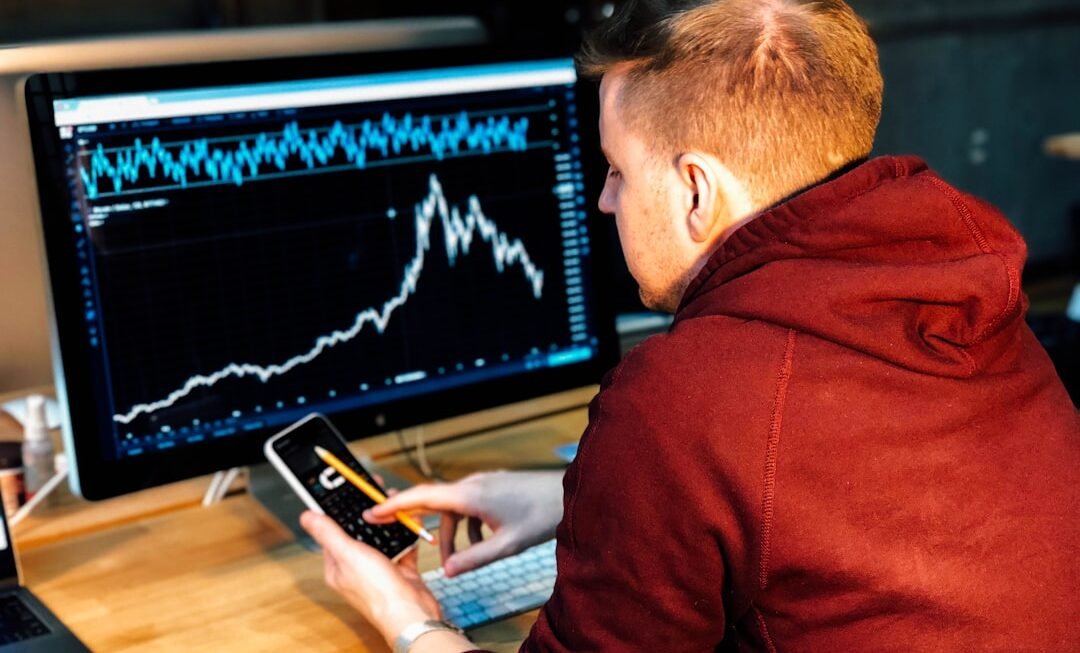Quantum computing represents a paradigm shift in computational capabilities, leveraging the principles of quantum mechanics to process information in ways that classical computers cannot. At its core, quantum computing utilizes quantum bits, or qubits, which can exist in multiple states simultaneously due to the phenomenon known as superposition. This allows quantum computers to perform complex calculations at unprecedented speeds, making them particularly suited for tasks that require immense computational power.
Unlike classical bits, which are binary and can only be in a state of 0 or 1, qubits can represent both states at once, enabling a vast increase in processing potential. The implications of quantum computing extend far beyond theoretical physics; they permeate various fields, including cryptography, drug discovery, and notably, finance. In the realm of finance, the ability to analyze vast datasets and execute complex algorithms in real-time could revolutionize trading strategies and risk management.
As financial markets become increasingly data-driven, the integration of quantum computing into algorithmic trading systems could provide a competitive edge that is currently unattainable with classical computing methods. This article delves into the intersection of quantum computing and algorithmic trading, exploring its potential, challenges, and future implications.
Understanding Algorithmic Trading
Algorithmic trading refers to the use of computer algorithms to automate trading decisions in financial markets. These algorithms analyze market data and execute trades based on predefined criteria, such as price movements, volume changes, or other market indicators. The primary advantage of algorithmic trading lies in its ability to process information and execute trades at speeds far beyond human capabilities.
This speed allows traders to capitalize on fleeting market opportunities that may only exist for milliseconds. The strategies employed in algorithmic trading can vary widely, from simple rule-based systems to complex machine learning models that adapt to changing market conditions. High-frequency trading (HFT) is a subset of algorithmic trading characterized by rapid trade execution and high turnover rates.
HFT firms leverage sophisticated algorithms to exploit minute price discrepancies across different markets or securities. As markets become more efficient and competitive, the need for advanced algorithms that can analyze vast amounts of data in real-time has become paramount. This is where the potential of quantum computing comes into play, offering a new frontier for enhancing algorithmic trading strategies.
The Limitations of Classical Computing in Algorithmic Trading
Despite the advancements in classical computing technology, there are inherent limitations that hinder the effectiveness of algorithmic trading strategies. One significant challenge is the sheer volume of data generated in financial markets. Traditional computers struggle to process and analyze this data quickly enough to make timely trading decisions.
For instance, during periods of high volatility or market events, the influx of information can overwhelm classical systems, leading to delays or missed opportunities. Moreover, classical algorithms often rely on linear models and assumptions that may not accurately reflect the complexities of financial markets. These models can fail to capture non-linear relationships and interactions between various market factors, resulting in suboptimal trading decisions.
Additionally, classical computing approaches may struggle with optimization problems that involve multiple variables and constraints, which are common in portfolio management and risk assessment. As a result, traders may find themselves at a disadvantage when competing against more sophisticated algorithms that can leverage advanced computational techniques.
The Potential of Quantum Computing in Algorithmic Trading
Quantum computing holds the promise of overcoming many limitations faced by classical computing in algorithmic trading. By harnessing the principles of superposition and entanglement, quantum computers can process vast amounts of data simultaneously, enabling them to analyze complex market dynamics more effectively. For example, a quantum computer could evaluate multiple trading strategies concurrently, identifying optimal paths for investment decisions that would take classical computers an impractical amount of time to compute.
One area where quantum computing could significantly impact algorithmic trading is in portfolio optimization. Traditional optimization techniques often struggle with large datasets and numerous constraints, leading to suboptimal asset allocations. Quantum algorithms, such as the Quantum Approximate Optimization Algorithm (QAOA), have the potential to solve these optimization problems more efficiently by exploring multiple solutions at once.
This capability could lead to more effective risk management strategies and improved returns for investors.
Quantum Computing Algorithms for Financial Markets
Several quantum algorithms have been proposed specifically for applications in financial markets, each designed to leverage the unique capabilities of quantum computing. One notable example is the Quantum Monte Carlo method, which can be used for pricing complex derivatives and assessing risk exposure. This algorithm utilizes quantum superposition to simulate multiple scenarios simultaneously, providing a more accurate valuation of financial instruments compared to classical Monte Carlo simulations.
Another promising approach is the use of quantum machine learning algorithms for predictive analytics in trading. Quantum versions of popular machine learning techniques, such as support vector machines and neural networks, can potentially process large datasets more efficiently than their classical counterparts. By identifying patterns and trends within market data at unprecedented speeds, these algorithms could enhance decision-making processes for traders and investors.
Challenges and Obstacles in Implementing Quantum Computing in Algorithmic Trading
Limitations of Quantum Hardware
While there have been substantial advancements in recent years, most quantum computers are still in their infancy and suffer from issues such as qubit coherence times and error rates. These limitations can hinder the practical application of quantum algorithms in real-world trading scenarios.
Steep Learning Curve
Additionally, there is a steep learning curve associated with developing quantum algorithms and integrating them into existing trading systems. Financial institutions must invest in training their personnel or hiring experts with specialized knowledge in quantum computing and quantum programming languages.
Cultural Shift Required
This transition requires not only technical expertise but also a cultural shift within organizations that have traditionally relied on classical computing methods.
The Impact of Quantum Computing on Market Efficiency
The introduction of quantum computing into algorithmic trading has the potential to enhance market efficiency significantly. By enabling faster processing of information and more sophisticated analysis techniques, quantum computing could lead to more accurate pricing of assets and reduced arbitrage opportunities across markets. As traders adopt quantum algorithms that can analyze vast datasets in real-time, price discrepancies may be corrected more swiftly, contributing to overall market stability.
Moreover, the ability to simulate complex market scenarios using quantum computing could improve risk assessment practices among traders and investors. By providing deeper insights into potential market movements and correlations between assets, quantum algorithms could help market participants make more informed decisions. This increased transparency and understanding may foster greater confidence among investors, further enhancing market efficiency.
Risks and Security Concerns in Quantum Computing for Algorithmic Trading
While the benefits of quantum computing are substantial, they also come with inherent risks and security concerns that must be addressed before widespread adoption in algorithmic trading can occur. One major concern is the potential for quantum computers to break existing cryptographic protocols that secure financial transactions and sensitive data. Classical encryption methods rely on mathematical problems that are computationally difficult for classical computers but may be easily solvable by sufficiently powerful quantum computers.
This vulnerability raises significant questions about data security and privacy within financial markets. As organizations begin to explore quantum computing applications, they must also invest in developing new cryptographic techniques that are resistant to quantum attacks. Post-quantum cryptography is an emerging field focused on creating encryption methods that can withstand the capabilities of quantum computers, but widespread implementation will take time.
Regulation and Ethics in Quantum Computing for Financial Markets
The integration of quantum computing into algorithmic trading also raises important regulatory and ethical considerations. As financial markets become increasingly reliant on advanced technologies, regulators must ensure that these systems operate fairly and transparently. The speed at which quantum algorithms can execute trades may exacerbate existing concerns about market manipulation and unfair advantages for those with access to superior technology.
Furthermore, ethical considerations surrounding data usage and algorithmic decision-making must be addressed. The potential for bias in machine learning models—whether classical or quantum—can lead to unintended consequences in trading strategies that disproportionately affect certain market participants or sectors. Regulators will need to establish guidelines that promote ethical practices while fostering innovation within the financial industry.
The Future of Algorithmic Trading with Quantum Computing
Looking ahead, the future of algorithmic trading is poised for transformation as quantum computing technology matures. As hardware improves and more robust quantum algorithms are developed, financial institutions will likely begin integrating these advancements into their trading strategies. The competitive landscape will shift as firms that adopt quantum computing gain an edge over those relying solely on classical methods.
Moreover, collaboration between academia and industry will play a crucial role in advancing research and development in this field. Partnerships between financial institutions and technology companies specializing in quantum computing could accelerate innovation and lead to breakthroughs that redefine algorithmic trading practices. As this technology evolves, it will be essential for market participants to remain adaptable and open to new methodologies that leverage the unique capabilities of quantum computing.
The Promise and Perils of Quantum Computing in Algorithmic Trading
Quantum computing presents both exciting opportunities and significant challenges for the world of algorithmic trading. Its ability to process vast amounts of data quickly and efficiently could revolutionize how traders analyze markets and execute strategies. However, the transition from classical to quantum computing will require careful consideration of technical limitations, security risks, regulatory frameworks, and ethical implications.
As we stand on the brink of this technological revolution, it is crucial for stakeholders across the financial industry to engage in thoughtful dialogue about how best to harness the power of quantum computing while mitigating its risks. The promise of enhanced market efficiency and improved decision-making must be balanced against the potential perils associated with security vulnerabilities and ethical dilemmas. Ultimately, the successful integration of quantum computing into algorithmic trading will depend on collaboration among technologists, regulators, and market participants committed to fostering innovation while ensuring fairness and security within financial markets.












